In the following ranking, we look at the best affordable colleges in Minnesota for bachelor’s degrees. If cold weather and cozying up to the Canadian border appeals to you, Minnesota could be a fantastic home-away-from-home for you. The public school system of the University of Minnesota is both affordable and expansive, each satellite campus has something unique to offer. Beyond the state schools, focused liberal arts universities and small religious colleges also abound, and Minnesota residents benefit from many high-quality academic options everywhere they turn.
With regard to affordability, the state’s low cost of living, even in St. Paul, Minneapolis, and other metropolitan areas, helps Minnesota’s top schools provide tuition costs that are well under the national average. However, while affordability is important and the reason behind this ranking, we wanted to identify the best affordable colleges in Minnesota based on other factors such as student success and class sizes. The result is the following article in which the boundaries between academic excellence and affordability practically disappear.
Methodology
In order to capture the balance between student success, affordability, and class size, we scored the following 20 schools based on graduation rates, tuition rates, and student-to-faculty ratios. We conducted a search for the colleges and universities in Minnesota offering bachelor’s degrees using the College Navigator tool at the National Center for Education Statistics (NCES). We used the data from each listing on this site to award points to each school. Point-based ties were broken by the lowest-cost tuition.
Average Cost of Attendance
Tuition is likely the first thing you will look at when narrowing down prospective colleges and universities in Minnesota. However, avoid picking a school simply because it is the cheapest, and instead make sure that it offers what you are looking for in a school in terms of majors, extracurriculars, and opportunities for experiential learning. For this article, we ranked tuition based on how much an in-state student would pay per year if he or she were to take 15 hours of courses each semester as reported from NCES. Out-of-state tuition rates are also provided for reference purposes only.
Points:
Under $7,500: 3 points
$7,500 to $15,000: 2 points
$15,001 and above: 1 point
Student-to-Faculty Ratio
Student-to-faculty ratios are important for determining the size of classes and the overall learning environment of the colleges and universities you are considering. When deciding between a large university and a small college, think about whether you are looking for academic support and close relationships with your classmates and professors or whether you prefer to learn in a more open setting in which you are free to learn at your own pace without much interaction with others. Although the size of the school ultimately boils down to personal preference, we awarded the most points to institutions with the lowest student-to-faculty ratios and, therefore, the smallest classes, as stated with NCES.
Points:
10:1 or less: 3 points
11:1 to 15:1: 2 points
Greater than 15:1: 1 point
Graduation Rate
Finally, a school’s graduation rate is a useful metric for measuring student satisfaction and success. Since the whole point of going to college is to earn a degree, you want to make sure that the school you choose has a solid history of producing graduates who stick with the program until the end. Schools with low graduation rates might be failing in one area or another that cause students to leave midway through the program. These reasons might include poor academic support, unaffordable tuition rates, or inexperienced faculty members. Therefore, we awarded the most points to schools with the highest graduation rates from NCES based on the following ranges.
Points
More than 50 percent: 3 points
Between 30 percent and 50 percent: 2 points
Less than 30 percent: 1 point
Ranking 20 Best Affordable Colleges in Minnesota
20. Capella University
Minneapolis, Minnesota

Points: 3
School Website
Capella University is an affordable online university in Minnesota. Approximately 37,800 students enroll from more than 20 countries and all 50 states in low-cost programs in fields such as business, counseling, education, health sciences, information technology, nursing, psychology, public service, and social work and human services. Capella’s GuidedPath learning format allows students to follow structured deadlines, participate in weekly discussions, learn on their own schedule, and apply what they have learned in the real world. For nontraditional, working, or adult students, FlexPath allows students to set their own deadlines, log in on their own time, and control their costs. Outside of the classroom, students have the option to chat online, join Facebook groups and student groups, and even meet up with students locally. The school’s peer-mentoring program provides an opportunity for students to connect with alumni to share perspectives, skills, and resources.
In-State Tuition: $14,579
Out-of-State Tuition: $14,579
Student-to-Faculty Ratio: 22:1
Graduation Rate: N/A
19. North Central University
Minneapolis, Minnesota

Points: 4
School Website
North Central University is a private affordable university in Minnesota located in the heart of downtown Minneapolis. This Christian university offers numerous low-cost undergraduate programs that prepares students with the skills they need for their careers and ministry. Popular top-value majors at NCU include religious vocations, human development, the liberal arts and humanities, pastoral counseling and specialized ministries, elementary education, and business. Online undergraduate majors are offered in business administration, church leadership, digital media, and humanitarian leadership. Student life includes intramural sports and more than 30 student organizations. NCU’s location in the culturally rich, exciting, and thriving city of Minneapolis offers not only international diversity and great food but also plentiful opportunities for internships and jobs.
In-State Tuition: $24,240
Out-of-State Tuition: $24,240
Student-to-Faculty Ratio: 17:1
Graduation Rate: 40 percent
18. Metropolitan State University
Saint Paul, Minnesota

Points: 4
School Website
Established in 1971, Metropolitan State University is one of the most economical colleges in Minnesota. Located in Saint Paul, with additional locations in Minneapolis and Brooklyn Park, Metro State is comprised of seven colleges and schools: Management, Liberal Arts, Individualized Studies, Community Studies and Public Affairs, Nursing and Health Sciences, Urban Education, and Sciences. Some of Metro State’s most popular and affordable majors include business, the liberal arts and humanities, nursing, accounting, criminal justice, and psychology. Metro State’s Student Life and Leadership Development (SLLD) is home to more than 40 student organizations with focus areas based on civic engagement opportunities, identities, hobbies, professions, and academic programs.
In-State Tuition: $7,879
Out-of-State Tuition: $14,980
Student-to-Faculty Ratio: 17:1
Graduation Rate: 27 percent
17. University of Northwestern-St. Paul
Saint Paul, Minnesota
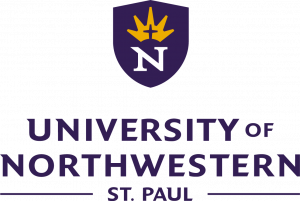
Points: 5
School Website
The University of Northwestern-St. Paul is a private evangelical Christian college that enrolls 3,443 undergraduate and 180 graduate students, 88 percent of whom are in-state students. Established as Northwestern Bible and Missionary Training School in 1902, this accredited university in Minnesota offers more than 75 affordable undergraduate areas of study as well as six master’s degrees. Popular economical majors include biblical studies, nursing, psychology, business, biology, the liberal arts and humanities, and elementary education. Students may choose from more than 40 clubs focused on witness/service as well as vocational, spiritual, educational, relational, and recreational opportunities. The school reports that 100 percent of traditional undergraduate students receive some type of financial aid to help offset the cost of tuition.
In-State Tuition: $31,540
Out-of-State Tuition: $31,540
Student-to-Faculty Ratio: 17:1
Graduation Rate: 62 percent
16. Crown College
Saint Bonifacius, Minnesota

Points: 5
School Website
Located just 30 miles west of Minneapolis in Saint Bonifacius, Crown College is a private affordable college in Minnesota affiliated with the Christian and Missionary Alliance. Established in 1916, the school’s 215-acre campus is lush with walking trails, lakes, hills, and oak trees. With more than 40 accredited and inexpensive degree programs as well as honors programs and strong placement rates, Crown College brings a Christian perspective and scholarship to the real-world of everyday life. Popular on-campus degrees include church ministry, exercise science, nursing, business, and biology as well as psychology, sports management, elementary education, and international relations. The school is often ranked among the “Best Midwest Regional Colleges” by U.S. News & World Report, and it is recognized as a military-friendly school and one of the top private Christian colleges in the state.
In-State Tuition: $26,200
Out-of-State Tuition: $26,200
Student-to-Faculty Ratio: 19:1
Graduation Rate: 67 percent
15. Concordia University-Saint Paul
Saint Paul, Minnesota

Points: 5
School Website
Established in 1893, Concordia University is a private affordable university in Minnesota. CSP is affiliated with the nine-school Concordia University System which is operated by the Lutheran Church-Missouri Synod. In terms of academics, CSP confers more than 100 top-value programs, including 76 majors, 48 minors, 25 graduate degrees, and 48 online options. Popular majors include business, exercise science, psychology, child development, criminal justice, marketing, accounting, and nursing. Approximately 95 percent of CSP graduates begin graduate school or launch their careers within one year of graduation, and CSP graduates earn 44 percent more in terms of salary than the national average, making the school one of the best values in the state for a college degree.
In-State Tuition: $22,275
Out-of-State Tuition: $22,275
Student-to-Faculty Ratio: 18:1
Graduation Rate: 55 percent
14. Oak Hills Christian College
Bemidji, Minnesota
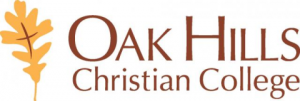
Points: 5
School Website
Oak Hills Christian College is a private non-denominational Christian college located in Bemidji. One of the lowest-cost colleges in Minnesota, it was established in 1946 as a residential college known as Oak Hills Christian Training School by the Oak Hills Fellowship, which was founded for the purpose of teaching the Bible without a denominational bias or focus. Students can choose from inexpensive Bachelor of Arts degrees in biblical studies, camp ministry, intercultural studies, pastoral ministry, or youth ministry as well as Bachelor of Science degrees in addictions counseling, applied psychology, business, or sports management. A bachelor’s degree in worship arts and biblical studies and two online degrees in business administration and ministry and leadership are also available. Students of this cheap degree program in Minnesota may earn prior learning credits from previous work experience, training programs, noncredit classes, self-study, seminars, and workshops. OHCC reports an impressive 12:1 student-to-faculty ratio, and 100 percent of first-time students receive some type of financial aid.
In-State Tuition: $17,314
Out-of-State Tuition: $17,314
Student-to-Faculty Ratio: 12:1
Graduation Rate: 67 percent
13. Bemidji State University
Bemidji, Minnesota

Points: 5
School Website
Located on the shores of Lake Bemidji, Bemidji State University is one of the cheapest colleges in Minnesota. Founded in 1919 as a preparatory institution for teachers, BSU is a top-ranked Green College, a designation earned due to its commitment to sustainability. This low-cost university enrolls more than 5,400 undergraduate and graduate students in on-campus and online programs and offers more than 60 inexpensive bachelor’s degrees. The school’s largest majors include psychology, criminal justice, technological studies, science, education, nursing, and business. The rich natural setting of the campus allows students to pursue opportunities provided by the environment while studying areas such as wildlife management, environmental studies, and aquatic biology. Other unique majors include Ojibwe, world languages, space studies, and indigenous studies.
In-State Tuition: $8,696
Out-of-State Tuition: $8,696
Student-to-Faculty Ratio: 20:1
Graduation Rate: 47 percent
12. Minnesota State University-Moorhead
Moorhead, Minnesota
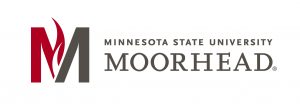
Points: 5
School Website
Minnesota State University-Moorhead confers nearly 150 top-value majors. At the undergraduate level, students can choose from Bachelor of Social Work, Bachelor of Science in Nursing, Bachelor of Science, Bachelor of Music, Bachelor of Fine Arts, and Bachelor of Arts degrees. Popular areas of study at this cheap university in Minnesota include elementary education, business, nursing, social work, and criminal justice. Outside of the classroom, MSUM offers a complete social, cultural, and educational experience through 19 learning communities and four cultural and identity centers. Students can serve on the student senate, participate in an intramural sport, help plan homecoming, or choose from more than 110 student organizations.
In-State Tuition: $8,496
Out-of-State Tuition: $15,906
Student-to-Faculty Ratio: 19:1
Graduation Rate: 46 percent
11. St. Cloud State University
Saint Cloud, Minnesota
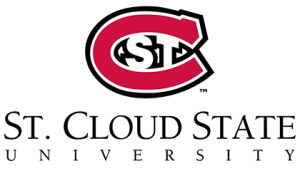
Points: 5
School Website
St. Cloud State University, founded in 1869, is one of the cheapest colleges in Minnesota with a large student enrollment. Located on a 100-acre campus, this affordable university provides degrees to more than 14,000 undergraduate and graduate students each year. With more than 200 inexpensive academic programs, SCSU offers popular majors in the liberal arts and humanities, communications, business, marketing, finance, and community psychology. Approximately 96 percent of courses are taught by faculty rather than teachers’ assistants, and 95 percent of graduates are employed full-time in fields related to their major. Outside of the classroom, students may join more than 200 clubs and organizations or cheer on the school’s four-time national champion Division II wrestling team.
In-State Tuition: $8,265
Out-of-State Tuition: $16,499
Student-to-Faculty Ratio: 21:1
Graduation Rate: 44 percent
10. Minnesota State University-Mankato
Mankato, Minnesota
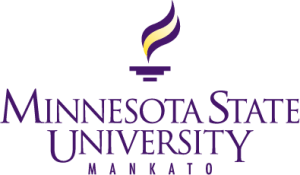
Points: 5
School Website
Minnesota State University-Mankato has been offering affordable degrees in Minnesota since it was established in 1858 as the Second State Normal School. Students can choose from more than 130 low-cost majors as well as 85 master’s, doctoral, and certificate programs and 50 online degrees. Popular inexpensive degrees include nursing, the liberal arts and humanities, communications, psychology, business, and police and criminal science. Known as a national leader in undergraduate research, MSU’s Undergraduate Research Center provides students with the chance to stand apart from their peers, gain real-world experience, and improve their resumes. Opportunities include mentoring, internships, the Undergraduate Research Symposium, and more. In addition, students can join 225 recognized student organizations and groups, including those focused on volunteering and involvement. MSU reported 31,500 hours of community engagement in its 2016 to 2017 academic year.
In-State Tuition: $8,184
Out-of-State Tuition: $16,235
Student-to-Faculty Ratio: 23:1
Graduation Rate: 48 percent
9. Martin Luther College
New Ulm, Minnesota
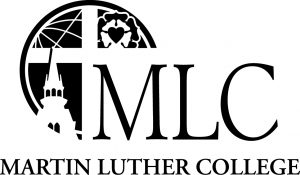
Points: 6
School Website
Established in 1995, Martin Luther College is a best-value college in Minnesota. Located in New Ulm, MLC enrolls around 1,700 undergraduate, graduate, and continuing education students with the goal of training them to meet the ministry needs of the Wisconsin Evangelical Lutheran Synod (WELS). Affordable undergraduate academic options include a Bachelor of Science in fields such as theological studies, educational studies, staff ministry, or parish music as well as a Bachelor of Science in Education with concentrations in early childhood, elementary, or middle and secondary education. Students may also pursue an affordable pre-seminary program and graduate with a Bachelor of Arts degree. Outside of the classroom, MLC’s sports teams are known throughout the Upper Midwest Athletic Conference and the NCAA Division III. Other on-campus activities for student involvement include the annual winter play, the photography staff, the student senate, and the school’s literary magazine.
In-State Tuition: $15,410
Out-of-State Tuition: $15,410
Student-to-Faculty Ratio: 12:1
Graduation Rate: 69 percent
8. University of Minnesota-Twin Cities
Minneapolis, Minnesota

Points: 6
School Website
The University of Minnesota-Twin Cities includes campuses in the twin cities of Minneapolis and Saint Paul. As a flagship institution, it is the largest and oldest campus of the University of Minnesota System, enrolling nearly 51,000 undergraduate and graduate students. Comprised of 12 undergraduate schools and colleges, UMN confers more than 150 low-cost majors designed for students with varying career goals and interests. Several standout academic options include technical writing and communication, interior design, aerospace mechanics and engineering, and behavior, evolution, and ecology. As a nationally renowned research institution, undergraduate students have plentiful opportunities to work with leading researchers and professors in their respective fields of study. Students of this inexpensive school also come together to learn from each other and socialize in more than 800 student groups and develop their leadership skills and strengths through service learning and other opportunities for community engagement.
In-State Tuition: $14,760
Out-of-State Tuition: $30,438
Student-to-Faculty Ratio: 17:1
Graduation Rate: 80 percent
7. University of Minnesota-Duluth
Duluth, Minnesota

Points: 6
School Website
Founded in 1947, the University of Minnesota-Duluth is one of the most affordable colleges in Minnesota. Comprised of eight colleges and schools, UMD offers bachelor’s degrees in more than 150 inexpensive majors and minors as well as graduate programs in more than 25 areas of study. Popular low-cost degree programs include studies in marketing, psychology, biology, communications, mechanical engineering, and finance as well as business, economics, education, and human services. When they are not busy studying, students have many opportunities to get involved in more than 240 organizations, the on-campus radio station, more than 50 intramural teams and recreational activities, and the Kirby Leadership Institute, where they will find workshops, internships, conferences, and volunteering opportunities.
In-State Tuition: $13,366
Out-of-State Tuition: $18,484
Student-to-Faculty Ratio: 18:1
Graduation Rate: 59 percent
6. University of Minnesota-Crookston
Crookston, Minnesota
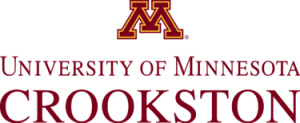
Points: 6
School Website
Founded in 1966, the University of Minnesota-Crookston is one of the best-value colleges in Minnesota. Enrolling more than 1,800 students, the school offers 35 bachelor’s programs, 40 concentration areas, 25 minors, and 16 online degrees. UMC is known for its affordable agriculture-focused majors in agronomy, agricultural business, agricultural communication, agricultural systems management, and environmental sciences as well as its degrees in natural resources, animal science, and horticulture. Other unique inexpensive degree programs are available in golf and turf management, equine science, and quality management. The campus is comprised of 237 acres that are home to more than 40 buildings, more than 40 student organizations, conservation areas, and NCAA Division II athletics teams. In addition, the school’s international partnerships and agreements with institutions around the world allow for collaboration as well as opportunities for traveling and studying abroad.
In-State Tuition: $11,822
Out-of-State Tuition: $11,822
Student-to-Faculty Ratio: 16:1
Graduation Rate: 54 percent
5. Winona State University
Winona, Minnesota
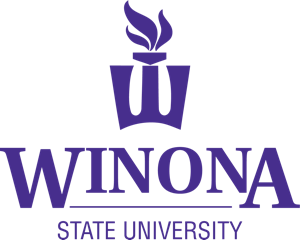
Points: 6
School Website
Winona State University, founded in 1858 as Winona Normal School, is an affordable university in Minnesota and the oldest in the university system. It is known as the first normal school to be established west of the Mississippi River, and it is comprised of colleges in business, education, liberal arts, nursing and health sciences, and science and engineering that offer more than 80 academic programs. Popular low-cost majors at this top-value university in Minnesota include nursing, business, elementary education, communications, and social work. Although most students pursue degrees at the school’s main campus, more than 1,000 attend from its location in Rochester. Outside of the classroom, WSU hosts more than 10 NCAA Division II teams as well as intramural sports. WSU also works with the city of Winona to put on a variety of annual festivals, including the Minnesota Beethoven Festival, Frozen River Film Festival, and the Great River Shakespeare Festival.
In-State Tuition: $9,425
Out-of-State Tuition: $15,348
Student-to-Faculty Ratio: 19:1
Graduation Rate: 61 percent
4. Southwest Minnesota State University
Marshall, Minnesota
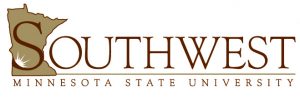
Points: 6
School Website
Founded in 1964, Southwest Minnesota State University is a top-value Minnesota university. Located in Marshall, SMSU enrolls around 6,800 undergraduate and graduate students each year. It is divided into two majors colleges: the College of Arts, Letters, and Sciences and the College of Business, Education, and Professional Studies, the latter of which is home to four schools in agriculture, business and public affairs, education, and graduate studies. Students may choose from more than 55 low-cost undergraduate majors, including popular programs in business, early childhood and elementary education, exercise science, marketing, nursing, accounting, and the liberal arts and humanities. SMSU also confers a number of affordable degree programs devoted to the sciences, agribusiness, and agriculture. Students may participate in numerous extracurricular activities while enjoying unique campus attractions, including a planetarium, an environmental learning area, an art museum, and several greenhouses and gardens.
In-State Tuition: $8,612
Out-of-State Tuition: $8,612
Student-to-Faculty Ratio: 14:1
Graduation Rate: 45 percent
3. Bethany Lutheran College
Mankato, Minnesota

Points: 7
School Website
Founded in 1927, Bethany Lutheran College is a private accredited Minnesota college located in Mankato. The school is operated by the Evangelical Lutheran Synod, enrolling approximately 600 undergraduate students each year. Bethany offers 24 low-cost majors, 25 minors, and nine pre-professional programs taught by more than 75 full-time and adjunct faculty members. Popular inexpensive areas of study include business, communications, elementary education, exercise physiology, English, and biology. The school’s liberal arts curriculum is centered around the Gospel of Christ in order to ground students in the Christian vocation; underclassman must take one religious-focused class per semester, while upperclassman complete one religion-based course per year. Thanks to its 9:1 student-to-faculty ratio, Bethany is able to provide a student-centered environment in which students work closely with their peers and professors to recognize, develop, and use their talents. Student activities include more than 25 organizations and clubs as well as daily chapel services.
In-State Tuition: $27,780
Out-of-State Tuition: $27,780
Student-to-Faculty Ratio: 9:1
Graduation Rate: 52 percent
2. University of Minnesota-Rochester
Rochester, Minnesota

Points: 7
School Website
The University of Minnesota-Rochester is one of the cheapest Minnesota universities that focuses primarily on general health sciences programs. Established in 2006, UMR offers two top-value bachelor’s degrees to around 1,000 undergraduate students: the Bachelor of Science in Health Sciences, which includes a nursing guarantee program in collaboration with the University of Minnesota-Twin Cities, and the Bachelor of Science in Health Professions, an education collaboration with the Mayo Clinic School of Health Sciences that prepares students for careers in the fields of respiratory care, echocardiography, sonography, and radiography. Although the campus is smaller than other locations within the U-M System, undergraduates enjoy a 13:1 student-to-faculty ratio and small class sizes in what is fondly referred to as the heart of “med city.” Approximately 92 percent of students receive some type of financial aid to help make UMR’s programs more affordable.
In-State Tuition: $13,352
Out-of-State Tuition: $13,352
Student-to-Faculty Ratio: 13:1
Graduation Rate: 61 percent
1. University of Minnesota-Morris
Morris, Minnesota

Points: 7
School Website
The University of Minnesota-Morris is ranked as the best affordable college in Minnesota for a bachelor’s degree. Founded in 1960, UMN Morris provides 35 low-cost majors, 33 minors, 13 areas of licensure, and nine pre-professional programs in the social sciences, science and mathematics, the humanities, and education. Popular economical majors among undergraduates include psychology, business, English, biology, chemistry, computer science, and elementary education. Students also have the freedom to design their own majors, and past examples include biostatistics, peace studies, animal behavior, and actuarial science. Students may enjoy 23 intramural sports teams, 19 NCAA sports teams, and around 120 clubs and organizations that encompass everything from gardening and ultimate frisbee to theater and music. With a welcoming community, low-cost tuition, state-of-the-art research opportunities, intentionally small classes, and the lowest debt load of all UMN attendees, UMN Morris students are well-positioned to succeed in their chosen career paths.
In-State Tuition: $13,314
Out-of-State Tuition: $15,342
Student-to-Faculty Ratio: 11:1
Graduation Rate: 59 percent
Frequently Asked Questions
What are the Most In-Demand Careers in Minnesota for Graduates with a Bachelor’s Degree?
Minnesota is continuously progressing technologically, industrially, financially, and in the workforce. Some jobs that were in-demand 50 or 60 years ago are unheard of today, and occupations that will be popular 50 or 60 years from now we can’t begin to guess. However, we can use current data and gain a better understanding of fast-growing industries over the next five or 10 years. According to the Minnesota Department of Employment and Economic Development, the following are the top 10 in-demand occupations in Minnesota for graduates who have earned a bachelor’s degree. We have listed these jobs in order from the highest to the lowest projected 10-year growth rate.
-
- Software Developers, Applications: 23.8 percent
- Information Security Analysts: 23.8 percent
- Operations Research Analysts: 22.4 percent
- Actuaries: 21.2 percent
- Athletic Trainers: 20.5 percent
- Market Research Analysts and Marketing Specialists: 20.1 percent
- Medical and Health Services Managers: 18.5 percent
- Personal Financial Advisors: 17.4 percent
- Appraisers and Assessors of Real Estate: 17.1 percent
- Mental Health Counselors: 16.8 percent
What are the Highest-Paying Jobs in Minnesota?
Whether you have known the career path you would follow since you were a three-year-old or you are simply research occupations that pay the most, knowing occupational employment and wage estimates can be useful. To get the most accurate figures, we consulted the U.S. Bureau of Labor Statistics (BLS), who analyzed data collected from employers in all industries throughout nonmetropolitan and metropolitan regions in Minnesota. According to the BLS, the annual mean wage across all occupations was $54,200 as of May 2018, the most recent data available. The top five highest-paying positions included general internists, psychiatrists, obstetricians and gynecologists, all other physicians and surgeons, and general dentists.
However, since this ranking is based on the best affordable colleges in Minnesota for bachelor’s degrees, we wanted to provide prospective students with data regarding salaries for occupations that could be obtained immediately after college. The following 10 positions are among the highest-paid in the state and can be pursued either with a bachelor’s degree alone or with a bachelor’s degree and additional experience and/or training.
-
- Architectural and Engineering Managers: $143,440
- Computer and Information Systems Managers: $143,300
- Marketing Managers: $139,440
- Compensation and Benefits Managers: $139,350
- Financial Managers: $133,970
- Advertising and Promotions Managers: $133,480
- Sales Managers: $132,420
- Air Traffic Controllers: $131,330
- Natural Sciences Managers: $125,780
- Human Resources Managers: $122,330
What are the Best Schools in Minnesota for Bachelor’s Recipients?
As the Land of 10,000 Lakes, Minnesota is known for its pastoral scenery, woods, and lakes as well as a growing technological business industry. Some of the state’s most notable colleges include the University of Minnesota, Minnesota State University, and Saint Cloud State University. With so many institutions of higher learning to choose from, how do you know which one is the best financial investment? To help you make your decision, we developed a list of five schools and provided information related to early- and mid-career earnings as well as each school’s 20-year net return on investment, which is how much you might earn 20 years after earning your degree, according to PayScale. The figures below are ranked according to the highest ROI and are calculated for in-state students who earned a bachelor’s degree without the need for financial aid.
-
- 1. University of Minnesota-Twin Cities
– 20-Year Net ROI: $449,000
– Early Career Pay: $55,800
– Mid-Career Pay: $101,600
- 1. University of Minnesota-Twin Cities
-
- 2. University of Minnesota-Duluth
– 20-Year Net ROI: $323,000
– Early Career Pay: $51,600
– Mid-Career Pay: $93,700
- 2. University of Minnesota-Duluth
-
- 3. Saint Cloud State University
– 20-Year Net ROI: $320,000
– Early Career Pay: $50,300
– Mid-Career Pay: $89,500
- 3. Saint Cloud State University
-
- 4. Concordia University-Saint Paul
– 20-Year Net ROI: $319,000
– Early Career Pay: $48,600
– Mid-Career Pay: $83,100
- 4. Concordia University-Saint Paul
-
- 5. Minnesota State University-Mankato
– 20-Year Net ROI: $309,000
– Early Career Pay: $50,500
– Mid-Career Pay: $88,300
- 5. Minnesota State University-Mankato
The University of Minnesota-Twin Cities is one of the top-value affordable universities in Minnesota by 20-year net ROI, early earning potential, and mid-career pay. The small campus located in the bustling metropolitan area of Saint Paul is known for producing exceptional graduates who major in areas such as natural resource sciences, agriculture, and food safety. Although many institutions of higher learning fall under the University of Minnesota College System, other sound financial investments include Saint Cloud State University, the only school in the state with an accreditation board for engineering and technology, and Concordia University-Saint Paul.
Whether you are looking to work in one of the state’s in-demand industries such as health services, banking and insurance, clean and renewable technology, manufacturing, or biosciences, or you are still narrowing down potential career paths, we hope that our list of the 20 best affordable colleges in Minnesota for bachelor’s degrees helps you get to where you want to be.
AS Staff
This concludes our ranking of the 20 best affordable colleges in Minnesota for bachelor’s degrees.
Other Rankings of Interest:
25 Best Affordable Online Business Administration Degree Programs (Master’s)
40 Best Affordable One-Year Accelerated Master’s Degree Programs
50 Most Affordable Colleges with the Best Return
25 Best Affordable Online Mathematics/ Statistics Education Degree Programs (Master’s)
25 Most Affordable Master’s of Statistics Degrees
20 Best Affordable Online Colleges for Computer Networking Degree
10 Most Affordable Law Schools in the United States
15 Best Affordable Animation Degree Programs (Bachelor’s)
40 Best Affordable Pre-Med Degree Programs (Bachelor’s)
15 Best Affordable Film Studies Degree Programs (Bachelor’s)

 The Best Colleges
The Best Colleges The Lowest Costs
The Lowest Costs The Highest Returns
The Highest Returns